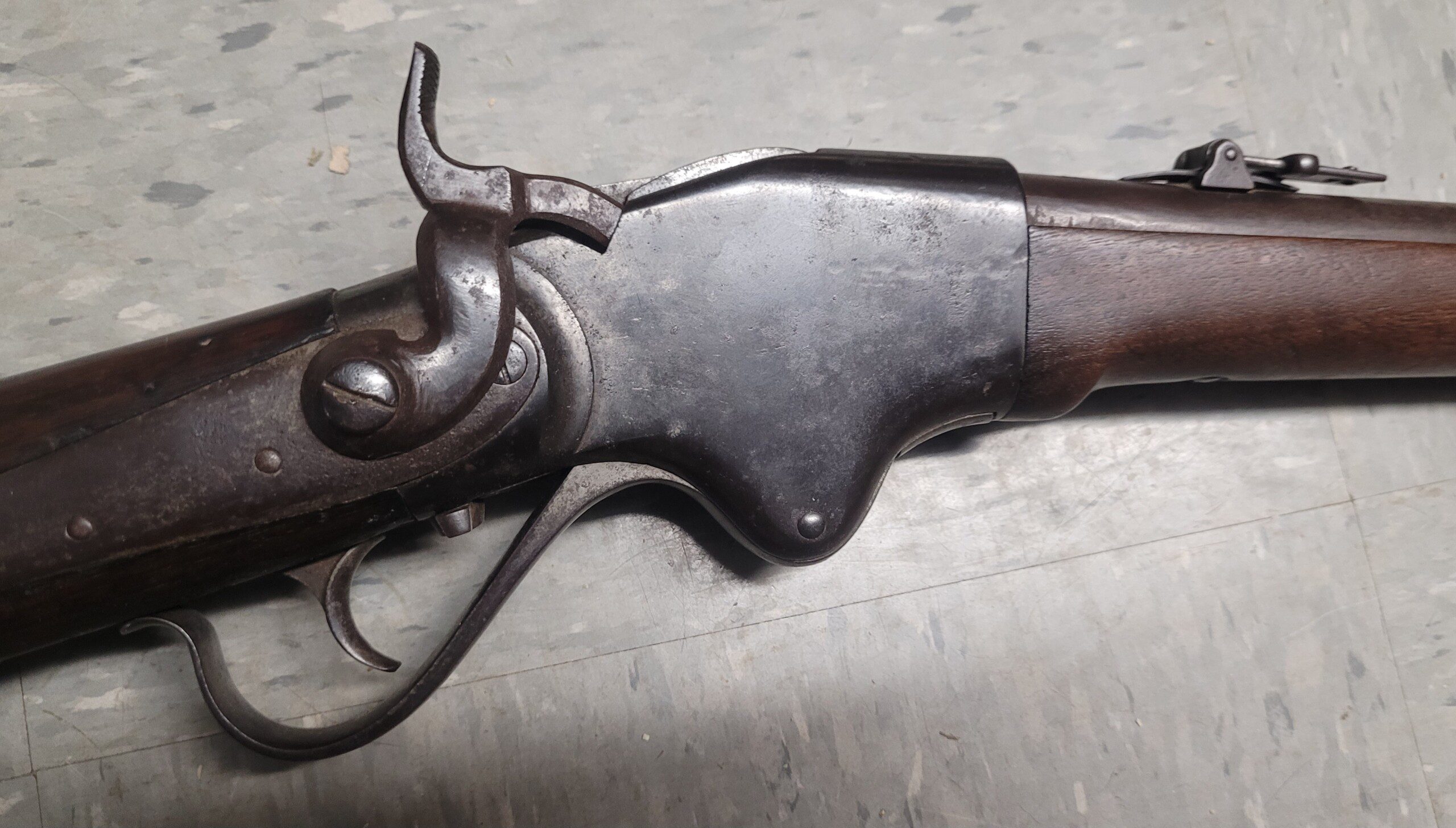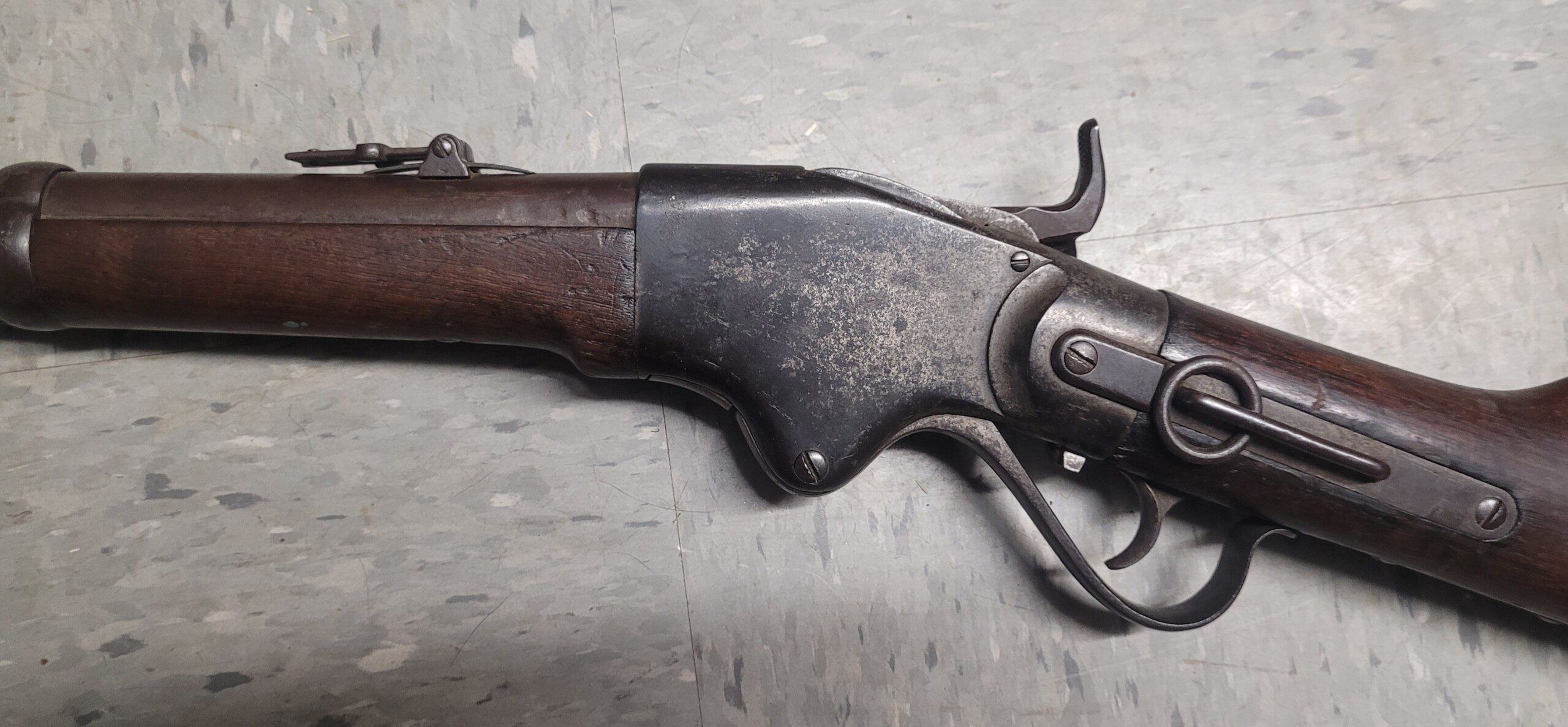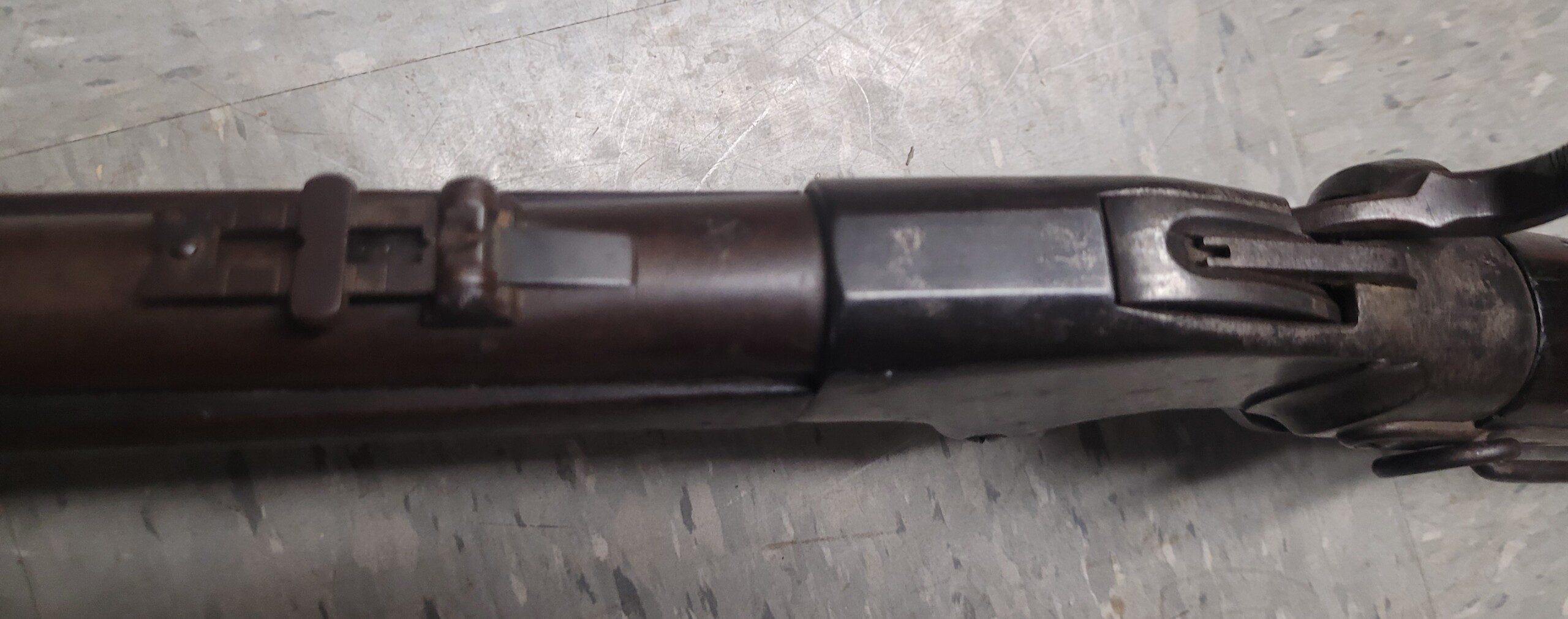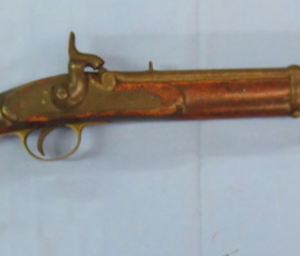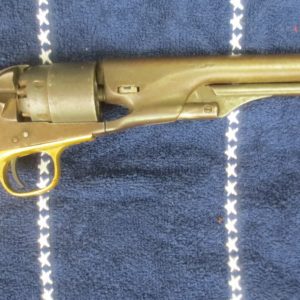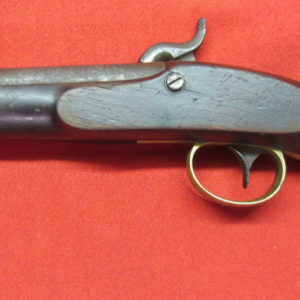Description
Very honest and decent cavalry weapon #52491 which was originally issued, according to the Springfield Research Database, to the 14th Kansas Volunteer Cavalry. It is functional and all markings legible. The front blade sight has been period modified to offset for the known rise of these carbines and it also has the Stabler cut off device, indicating it was used AFTER the Civil War as well during the Indian Wars. Overall it shows honest age and field use. The 14th Kansas was the main unit that hounded the Confederate raider William Quantrill !
14th Kansas Volunteer Cavalry OVERVIEW:Organized at Fort Scott and Leavenworth April, 1863, as a Battalion of 4 Companies for escort to General Blunt. Regiment organized at Fort Scott, December, 1863. Attached to District of the Frontier, Dept. of Missouri, April, 1863, to January, 1864. Unattached, District Frontier, 7th Corps, Dept. Arkansas, to March, 1864. 3rd Brigade, Frontier Division, 7th Corps, to January, 1865. 2nd Brigade, 3rd Division, 7th Corps, to February, 1865. Unattached, 7th Corps, Pine Bluff, Ark., to June, 1863.
SERVICE:Cabin Creek, C. N., July 1-2, 1863 (Co. “B”). Operations against Quantrill in Kansas August 20-28. Massacre at Lawrence August 21 (Detachment). Operations in Cherokee Nation September 11-25. Waldron September 11. Baxter Springs October 6 (Co. “B”). Regiment moved to Fort Smith, Ark., November 20-December 3. Duty there scouting and foraging till February 23. 1864. Expedition into Choctaw County February 1-21. Moved to Ozark February 26-28, and duty there till April 6. Flint Creek March 6. Steele’s Expedition against Camden April 6-May 3. Prairie D’Ann April 9-12. Poison Spring April 18 (Detachment). Jenkins’ Ferry, Saline River, April 30 (Cos. “F” and “G”). Return to Fort Smith May and duty there till January, 1865. Hahn’s Farm near Waldron June 19, 1864. Ozark July 14-15. Scout on Republican River August 19-24. Camp Verdegris September 2. Cabin Creek September 19. Vache Grass September 26. (Co. “E” with Blunt’s headquarters during Brice’s Raid in Missouri and Kansas October-November. Big Blue and State Line October 22. Westport October 23. Mine Creek, Little Osage River, and Battle of Charlot October 25. Newtonia October 28.) Moved to Clarksville January 1, 1865, thence to Pine Bluff February 25-27, and duty there till May. Moved to Fort Gibson and duty there till June. Mustered out June 25, 1865.
Regiment lost during service 2 Officers and 51 Enlisted men killed and mortally wounded and 2 Officers and 114 Enlisted men by disease. Total 169.
Quantrill’s Raiders were the best-known of the pro-Confederate partisan guerrillas (also known as “bushwhackers“) who fought in the American Civil War. Their leader was William Quantrill and they included Jesse James and his brother Frank.
Early in the war Missouri and Kansas were nominally under Union government control and became subject to widespread violence as groups of Confederate bushwhackers and anti-slavery Jayhawkers competed for control. The town of Lawrence, Kansas, a center of anti-slavery sentiment, had outlawed Quantrill’s men and jailed some of their young women. In August 1863, Quantrill led an attack on the town, killing more than 180 civilians, supposedly in retaliation for the casualties caused when the women’s jail collapsed.
The Confederate government, which had granted Quantrill a field commission under the Partisan Ranger Act, was outraged and withdrew support for such irregular forces. By 1864 Quantrill had lost control of the group, which split up into small bands. Some, including Quantrill, were killed in various engagements. Others lived on to hold reunions many years later, when the name Quantrill’s Raiders began to be used. The James brothers formed their own gang and conducted robberies for years as a continuing insurgency in the region.
